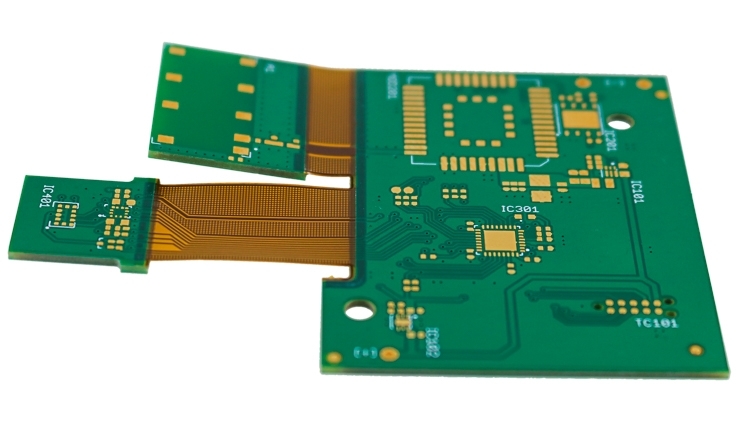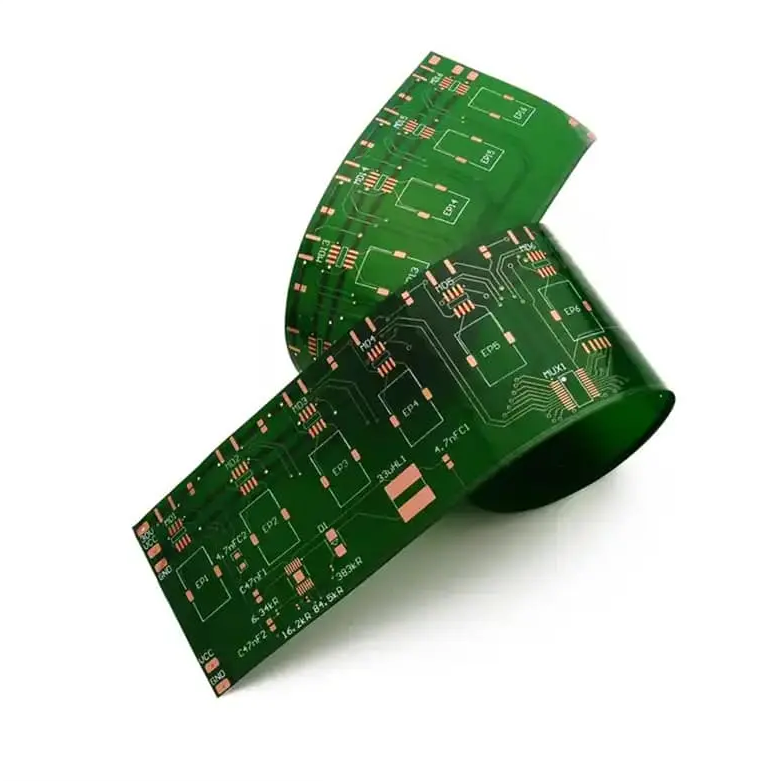Flex PCB (Flexible Printed Circuit Board) manufacturing is a specialized area of electronics production that focuses on creating bendable circuits, essential for modern compact and dynamic devices. Mastering the production of Flex PCBs is crucial due to their significant role in various high-demand sectors, including medical devices, aerospace, and consumer electronics. Best FPC, a prominent exporter and quick-turn manufacturer in the flexible circuit industry, excels in producing polyimide and polyester Flex PCBs. Their expertise provides tailored solutions across diverse markets, from medical and aerospace instrumentation to industrial applications and consumer electronics, ensuring high reliability and performance in complex electronic assemblies.

Understanding Flex PCB Manufacturing
Definition and Types of Flex PCBs
Flexible Printed Circuit Boards (Flex PCBs) are a type of electronic circuit built on flexible substrates, designed to fit into spaces where rigid PCBs cannot. They are often used in high-density electronic applications due to their ability to bend, flex, and fold, minimizing space requirements and enhancing the durability of electronic products. There are several types of Flex PCBs including single-sided, double-sided, and multilayer circuits, each offering different advantages for specific applications.
Key Components and Materials Used
The backbone of Flex PCBs lies in their materials. The most widely used material is Polyimide (PI), known for its excellent thermal stability, mechanical toughness, and chemical resistance. Manufactured by Dupont Corporation under the brand name "Kapton", this polyimide film maintains a low dielectric constant of 3.6, crucial for maintaining signal integrity in electronic circuits. Depending on the application, the thickness of these circuits can vary—thinner ones are typically used in delicate medical devices, while thicker circuits cater to the robust needs of automotive and industrial applications. A key component in the manufacturing of Flex PCBs is the stiffener, used to provide rigidity to areas of the Flex PCB that require additional support for soldering components.
Manufacturing Process Overview
The manufacturing process of Flex PCBs involves several precise and intricate steps. Starting with the design and layout, the process includes the creation of a photographic film that serves as a template for the circuit pattern. Layers of copper are then etched onto the polyimide film based on this template. Following the etching, features like stiffeners and coverlays are added, which enhance the mechanical support and provide insulation. The circuits are finally tested for functionality and integrity, ensuring they meet the specific needs of their application, be it in a consumer device or a piece of aerospace equipment.
Challenges in Flex PCB Manufacturing
Design Complexities
Designing Flex PCBs involves careful consideration of the bending and folding aspects, which can significantly influence the placement of components and the routing of traces. Designers must ensure mechanical and electrical compatibility with the flexible nature of the substrate, often a complex task that requires advanced CAD tools and expertise.
Material Selection and Sourcing
Choosing the right materials that can withstand the operational environments while maintaining performance is crucial. The availability and sourcing of high-quality materials like Kapton also pose challenges, particularly in maintaining a consistent supply chain.
Manufacturing Constraints and Limitations
Flex PCB manufacturing must contend with issues such as alignment during layering, precision in etching circuits, and integrating stiffeners without compromising the flexural areas. Each of these steps requires precise control and can introduce constraints that impact the overall design and functionality of the PCB.
Best FPC Solutions
Overview of Best FPC's Offerings
Best FPC offers a comprehensive range of Flex PCB solutions including single-sided, double-sided, dual access, and multi-layer flex circuits. Their approach is collaborative, working closely with clients to meet quality, delivery, and cost objectives, aligning with specific project needs through customized production strategies such as ship-to-stock programs.
Customized Solutions for Different Industries
Best FPC caters to a wide range of industries by offering tailor-made solutions that meet the specific requirements of each sector, whether it's medical, aerospace, or consumer electronics. Their expertise allows them to adapt designs for optimal performance across diverse applications.
Flexibility in Design and Manufacturing Processes
Best FPC's manufacturing flexibility allows them to adapt processes quickly to new designs and requirements. This agility is crucial in responding to the fast-evolving technological landscape and client needs, ensuring that every Flex PCB solution is not only functional but also innovative.

Mastering Flex PCB Manufacturing with Best FPC
Collaborative Design Process
Best FPC emphasizes a highly collaborative design process that involves close interaction with clients from the initial concept to the final production. This approach ensures that the Flex PCBs are tailored to meet the specific needs and constraints of each application, providing a custom solution that integrates seamlessly with the client's product.
Quality Control and Assurance Measures
At Best FPC, the commitment to quality is paramount. The company adheres strictly to ISO 9001:2000 standards throughout all phases of production, from material procurement to final testing and packaging. Each Flex PCB undergoes rigorous quality control checks at every stage of manufacturing. This meticulous attention to detail ensures that each product meets the highest standards of quality and reliability, minimizing the risk of defects and ensuring superior performance.
Innovation and Continuous Improvement Initiatives
Innovation is at the core of Best FPC's operations. The company continuously invests in research and development to enhance the performance and capabilities of its Flex PCBs. By adopting the latest technologies and manufacturing techniques, Best FPC not only improves existing products but also develops new solutions that address emerging market needs. This proactive approach to innovation and improvement keeps Best FPC at the forefront of the Flex PCB industry.
Case Studies
Examples of Successful Flex PCB Projects with Best FPC
Best FPC has successfully delivered numerous Flex PCB projects across various industries. One notable project involved the development of a highly flexible circuit for a wearable medical device, which required a unique multi-layer design to accommodate complex electronic components. Through Best FPC's expert design and manufacturing capabilities, the project was delivered on time and met all the stringent medical standards.
Challenges Faced and Solutions Implemented
Each project brings its set of challenges, such as the need for ultra-thin layouts or integration of additional functionalities within limited spaces. Best FPC addresses these challenges through innovative design solutions, advanced materials, and precision manufacturing processes. For example, in an aerospace application, Best FPC developed a heat-resistant Flex PCB that could withstand extreme environmental conditions, using specialized materials that exceeded the usual industry standards.
Impact on Clients' Products and Businesses
The Flex PCBs developed by Best FPC have significantly enhanced the performance and reliability of clients' products. In the consumer electronics sector, Best FPC's circuits have enabled the production of slimmer, more flexible devices, directly contributing to increased market competitiveness and customer satisfaction. For industrial clients, the robustness of these Flex PCBs has reduced maintenance needs and increased the operational lifespan of their equipment.
Future Trends and Innovations
Emerging Technologies in Flex PCB Manufacturing
The Flex PCB industry is rapidly evolving with developments such as 3D printing of circuitry, advanced materials like liquid crystal polymers, and environmentally friendly manufacturing processes. These technologies promise to further expand the capabilities and applications of Flex PCBs.
Best FPC's Approach to Adapting to Industry Changes
Best FPC stays ahead of industry trends by maintaining active involvement in technological advancements and adapting its processes to incorporate new technologies. This adaptability ensures that Best FPC can meet the evolving demands of the industry and continue providing state-of-the-art solutions.
Predictions for the Future of Flex PCBs
Looking ahead, the demand for Flex PCBs is expected to grow, driven by the expansion of applications in emerging sectors such as flexible displays, wearable technology, and smart textiles. With its strong foundation in innovation and quality, Best FPC is well-positioned to lead the way in these exciting developments, shaping the future of electronic manufacturing with cutting-edge flexible circuit solutions.
Closing Words
Mastering the art of Flex PCB manufacturing demands a deep understanding of design intricacies, material properties, and cutting-edge manufacturing techniques. Best FPC emerges as a leader in this sector, providing tailor-made solutions that cater to varied needs across industries. With a collaborative approach to design, rigorous quality assurance, and a commitment to continual innovation, Best FPC consistently surpasses the stringent expectations associated with Flex PCB applications. Dedicated to excellence and poised to adapt to new technologies, Best FPC is an indispensable ally for any company seeking to harness the benefits of Flex PCBs in their products. As the sector progresses, Best FPC's commitment to quality and innovation positions them at the forefront of delivering superior flexible circuit solutions.










 2024-05-18
2024-05-18
 BEST
BEST

.png)
.png)
.png)
.png)

.png)

